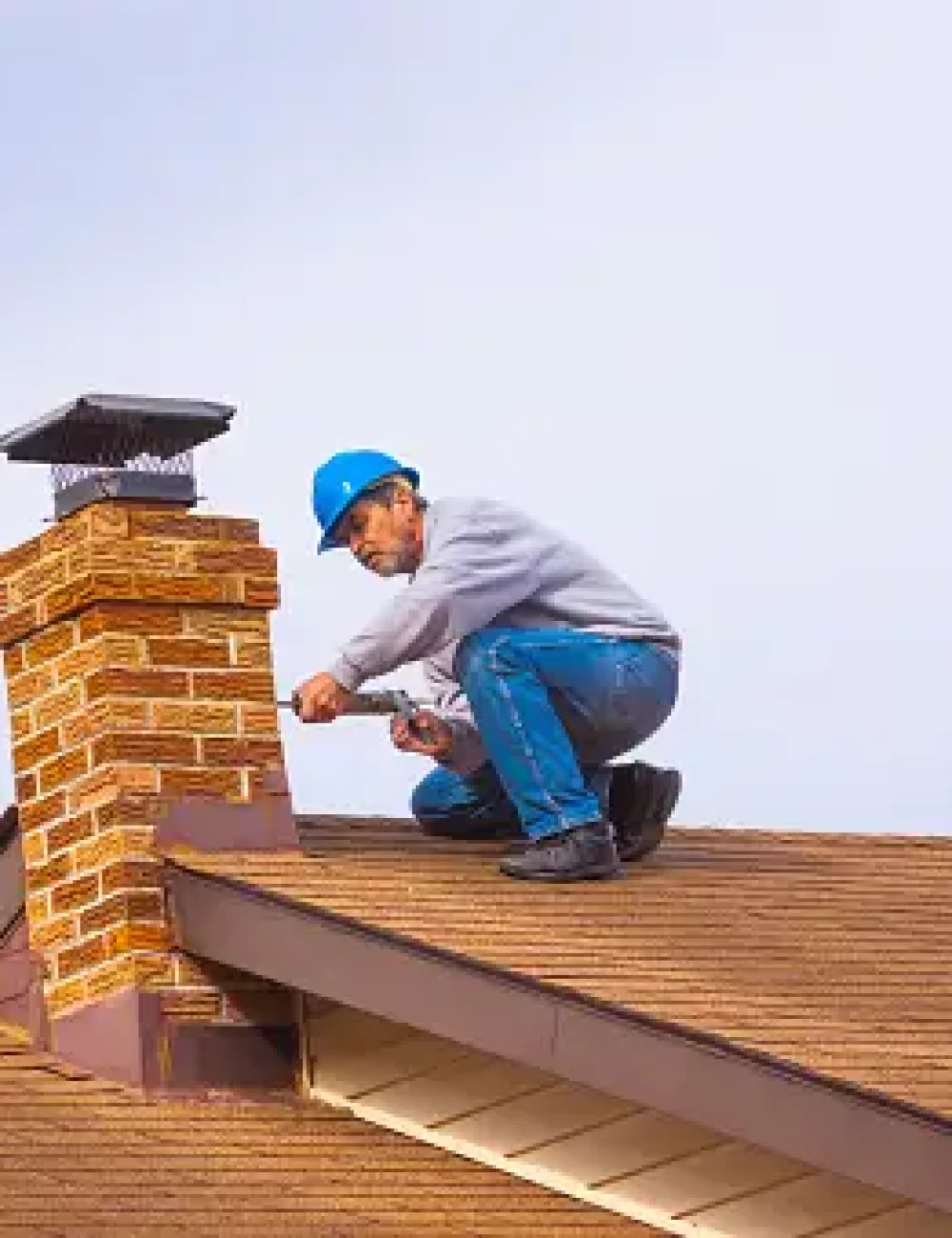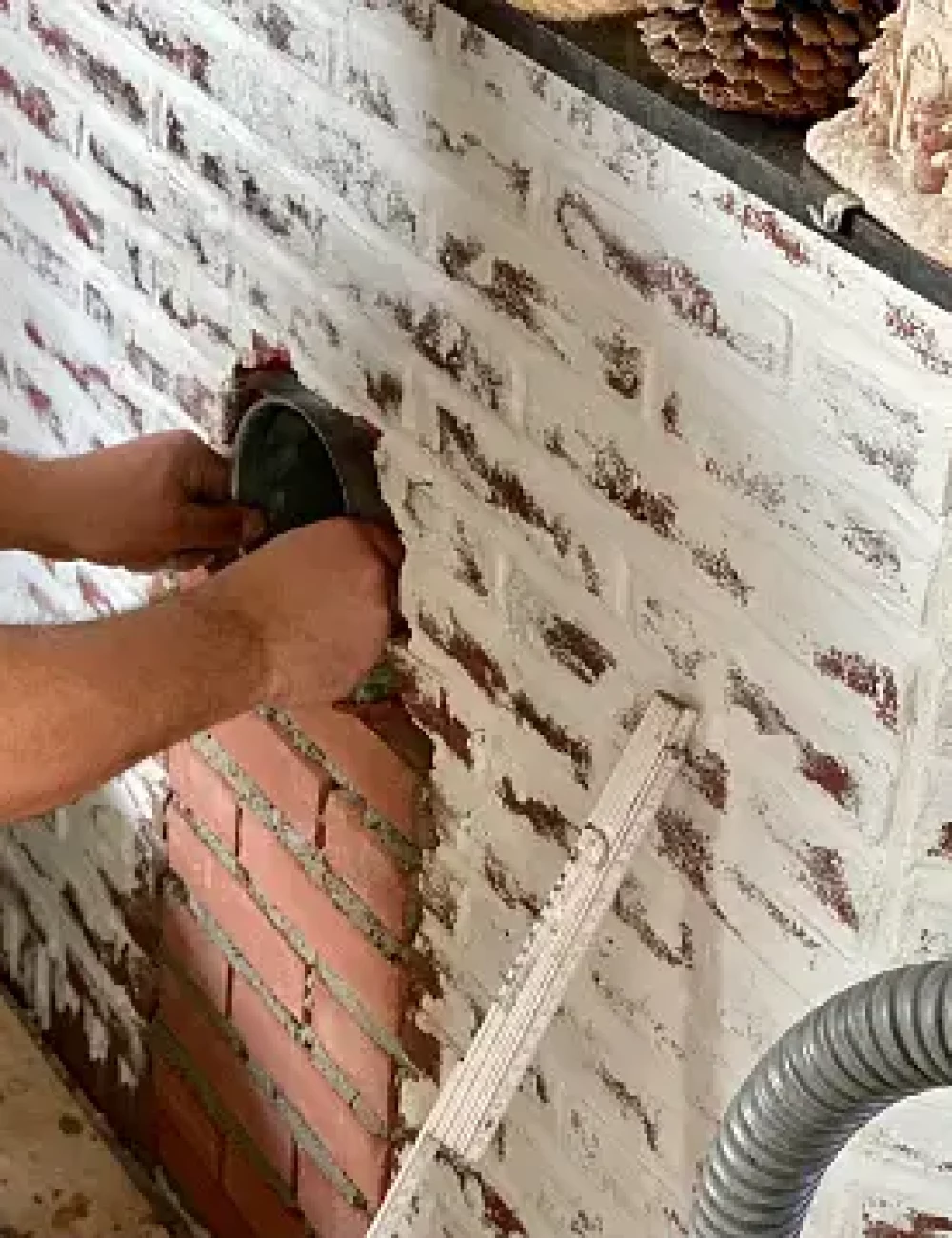Services


Chimney Installation Service
Introduction
Proper chimney installation is crucial for the safe and efficient operation of your fireplace or heating appliance. It ensures the proper venting of smoke and harmful gases, prevents leaks and structural damage, and minimizes the risk of fire hazards.
To ensure a successful chimney installation, it is highly recommended to hire a professional chimney installation service. They have the expertise, experience, and knowledge to assess your specific needs, comply with local building codes, and perform a safe and efficient installation.
Pre-Installation Preparation
Assessing the Site and Choosing the Right Location
Before installing a chimney, a thorough site assessment is necessary. Factors to consider include the location of the heating appliance, clearance requirements, proximity to combustible materials, and overall design aesthetics.
Obtaining Necessary Permits and Approvals
Contact the local building department or relevant authorities to obtain the necessary permits and approvals for chimney installation. Compliance with local regulations is essential to ensure safety and avoid potential legal issues.
Sizing and Design Considerations
Determining the appropriate chimney size is crucial for optimal performance. Factors such as the type of heating appliance, flue diameter, and height requirements need to be considered during the design process.
Materials and Components
Chimney Flue Liners
Flue liners protect the chimney structure from the corrosive effects of combustion byproducts and help improve draft efficiency. Common materials used for flue liners include clay tile, stainless steel, and cast-in-place liners.
Chimney Caps and Dampers
Chimney caps protect the flue opening from rain, debris, and animal intrusion. Dampers regulate airflow and prevent heat loss when the fireplace is not in use.
Masonry Materials (if applicable)
For masonry chimneys, appropriate materials such as bricks, mortar, and cement are used to construct a durable and aesthetically pleasing chimney structure.
Insulation and Ventilation Systems
Insulation around the chimney helps prevent condensation and reduces heat transfer to adjacent combustible materials. Ventilation systems, such as air-cooled or double-wall chimneys, provide added safety and improve efficiency.
Installation Process
Step-by-Step Installation Procedure
Site Preparation and Safety Measures: Clear the area around the installation site and implement necessary safety measures to protect workers and property.
Setting the Foundation or Base: Construct a solid foundation or base to support the chimney structure.
Assembling and Installing Flue Liners: Properly assemble and install flue liners according to manufacturer instructions and building codes.
Installing Chimney Caps and Dampers: Attach chimney caps and install dampers to ensure proper airflow control and protection against external elements.
Connecting to Appliances: Connect the chimney to the heating appliance, ensuring secure and leak-free connections.
Insulation and Ventilation Installation: Install insulation and ventilation systems as per design requirements and local regulations.
Sealing and Waterproofing Techniques
Proper sealing and waterproofing are essential to prevent leaks and water damage. Sealant materials such as flashing, chimney crowns, and waterproof coatings are used to protect the chimney structure from moisture penetration.
Compliance with Building Codes and Regulations
Throughout the installation process, it is crucial to adhere to local building codes and regulations to ensure compliance with safety standards and to avoid potential penalties or hazards.
Testing and Inspection
Smoke Testing for Draft and Airflow
After installation, a smoke test is conducted to check the chimney's draft and airflow. This test helps identify any leaks, blockages, or issues that may affect the proper functioning of the chimney.
Chimney Cleaning and Maintenance Recommendations
During the testing and inspection phase, chimney professionals may provide recommendations for regular cleaning and maintenance to ensure the continued performance and longevity of the chimney. This may include suggestions for scheduling regular chimney cleanings, annual inspections, and maintenance tasks such as creosote removal and checking for any signs of damage or deterioration.
Common Challenges and Troubleshooting
Addressing Draft and Smoke Issues
If there are draft or smoke issues after installation, it may indicate problems such as improper flue sizing, blockages, or insufficient air supply. Chimney professionals can troubleshoot these issues and recommend appropriate solutions to improve draft and airflow.
Resolving Leaks and Water Damage
Leaking chimneys can cause significant damage to the structure and surrounding areas. Chimney professionals can identify the source of the leaks, such as damaged flashing or chimney crown, and provide repair solutions to resolve water-related issues.
Dealing with Structural or Ventilation Problems
In some cases, structural issues or ventilation problems may be discovered during or after chimney installation. Experienced professionals can assess these issues and propose suitable solutions, which may involve repairs, reinforcement, or modifications to ensure the chimney's stability and proper functioning.
Cost Considerations
Factors Affecting Chimney Installation Costs
The cost of chimney installation can vary depending on factors such as the type of chimney, materials used, height, complexity of the design, local labor rates, and additional components required.
Obtaining Multiple Quotes and Comparing Estimates
To make an informed decision, it is recommended to obtain multiple quotes from reputable chimney installation services. Comparing estimates will help you understand the range of costs involved and choose a service that offers a balance of quality and affordability.
Budgeting for Additional Expenses
In addition to the installation cost, budgeting for additional expenses is essential. This may include permits, materials, inspections, and any unforeseen repairs or modifications that may arise during the installation process.
Conclusion
Professional chimney installation is crucial to ensure the safety, efficiency, and longevity of your chimney system. It provides peace of mind, knowing that the installation has been done correctly and in compliance with applicable regulations.
By following the proper installation guidelines, performing regular maintenance, and addressing any issues promptly, you can enjoy a well-functioning chimney that enhances the comfort and value of your home for years to come.
How We Work
How To Use Our Service
Experience the convenience of our seamless chimney cleaning service. Select, schedule, pay, and let our experts transform your chimney, ensuring unmatched quality and peace of mind.
Select Services
Choose the desired chimney cleaning service that suits your needs from our comprehensive range of options.
Set The Date
Schedule a convenient date and time for our skilled technicians to visit your location and perform the chimney cleaning.
Make Payment
Easily complete the payment process through our secure and user-friendly payment methods.
Cleaning Process
Sit back and relax as our experts meticulously clean your chimney, removing soot, debris, and potential fire hazards, ensuring optimal functionality and safety.
Why Choose Us
Give All Your Cleaning Needs
Choose us for exceptional chimney cleaning service by experienced professionals, ensuring thorough cleaning, efficiency, and safety. Trust our attention to detail, commitment to quality, and peace of mind for your home.
Our Mission
Our mission is to provide top-quality chimney cleaning services, ensuring a safe and comfortable living environment for our valued customers.
Our Vision
Our vision is to provide the highest quality chimney cleaning service, ensuring customer satisfaction, safety, and a cleaner environment for all.
Our Office
Jl. Raya Kuta Chartered No.70 Street, Denpasar – Bali, Indonesia
Contact Info
- (+021) 1580 3658
- support@domain.com
- Every Day 09:00 - 18:00

